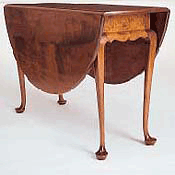QUESTION: While recently going through some boxes in my attic, I discovered a pair of old spectacles that seem to be in rather good condition. Are these collectible?
ANSWER: While most people might just give these away or sell them at a yard sale, you should definitely hang on to these, as they’re very collectible.
Lots of people wear eyeglasses. With the advent of contact lenses, some don’t even show it. But these devices, first invented to magnify text, have become as ubiquitous as cell phones in today’s society.
Church sales and thrift shops often get plastic bags filled with old eye glasses, as people either get new ones or contact lenses. Today, eye glasses are not only a seeing aid but also a fashion accessory. And, what about the spectacles you found in an old family trunk and sold at your last yard sale? Believe it or not, just like other out-of-fashion accessories, those glasses are collectible.
 Spectacles have been around since the late Middle Ages when wealthy people in Italy and China wore them. Another early form of sunglasses were goggles, first created by the Eskimos to protect their eyes from snow glare.
Spectacles have been around since the late Middle Ages when wealthy people in Italy and China wore them. Another early form of sunglasses were goggles, first created by the Eskimos to protect their eyes from snow glare. The use of eyeglasses grew by the 18th century as their technology improved. They became fashionable when famous Americans began wearing them. Everybody is familiar with the paintings of Benjamin Franklin wearing the bifocals that he invented. Franklin created the first bifocals in the 1760's while living in London.
 Thomas Jefferson created the first oblong lenses for his reading glasses to increase his field of vision. Before that glass lenses were round or oval. Later, President Theodore Roosevelt started a fashion trend when he first wore pince-nez glasses—those held on a person’s face by a spring on the nose.
Thomas Jefferson created the first oblong lenses for his reading glasses to increase his field of vision. Before that glass lenses were round or oval. Later, President Theodore Roosevelt started a fashion trend when he first wore pince-nez glasses—those held on a person’s face by a spring on the nose.
While women didn't wear glasses in public in 18th century America, one woman advertised in 1753, that she “grinds all sorts of Optic Glasses to the greatest perfection." Known in her ad only as "the widow Balthasar Sommer on Pot Baker's Hill,'' she became the earliest recorded American eye glasses maker. But it wasn’t until after the American Revolution that people recorded eye glasses as made in America.
By the early 19th century, glasses adjusted over the ears to fit the entire family. A device called a “Temple" slid back and forth. As with earlier versions, their sole purpose was to magnify.
Eye glass makers used gold and silver for early frames, mostly because they were the most common workable metals available. So a pair of glasses wasn’t cheap. If you think you have old ones, check the hallmark to learn date, country and maker.
Don't pass up examples in brass or steel. They could be 18th or 19th century. In this plastic age, look for authentic tortoise shell frames. Don't limit yourself to 19th and early 20th-century glasses. Remember, they’ve always been made in the fashion of their day.
 The 1970's were a great time for unique styles. An example would be the tinted sunglasses designed by artist Peter Max, along with his Pop Art design cases. And don’t forget the outsize sunglasses in the Jackie Kennedy Onassis style. Celebrity styles with funky frame, like the ones worn by Elton John and John Lennon’s small, round, black-rimmed ones, also debuted in the 1970's. Never mind that the frames are plastic. Like other 1970's objects, they’re also collectible.
The 1970's were a great time for unique styles. An example would be the tinted sunglasses designed by artist Peter Max, along with his Pop Art design cases. And don’t forget the outsize sunglasses in the Jackie Kennedy Onassis style. Celebrity styles with funky frame, like the ones worn by Elton John and John Lennon’s small, round, black-rimmed ones, also debuted in the 1970's. Never mind that the frames are plastic. Like other 1970's objects, they’re also collectible.If you wish to collect eye wear and related objects, you can build a collection of not only pairs of eyeglasses showing a variety of frames and clear and tinted lenses, but also opticians' trade signs, related documents, and paintings of people wearing glasses. In most cases, you’ll find many eye glasses for sale for a song at flea markets, church and garage sales.













